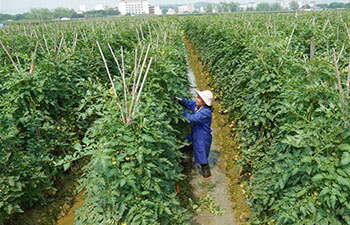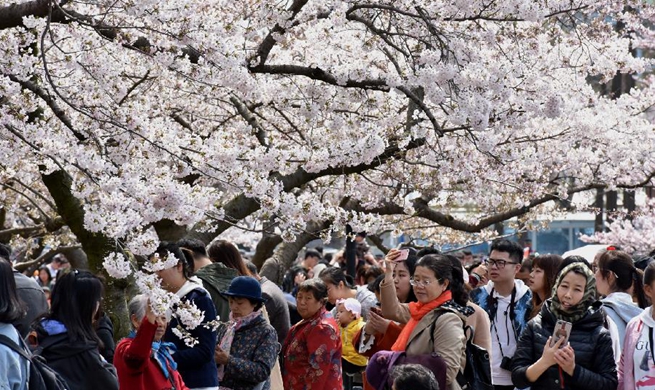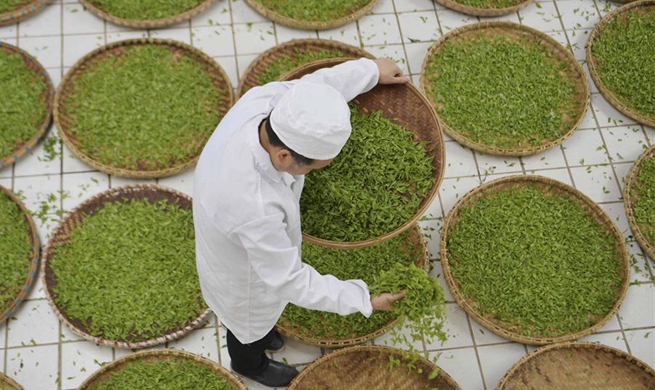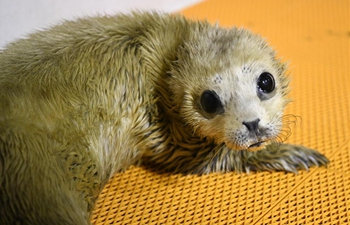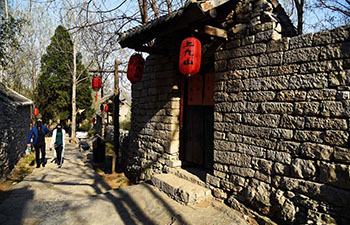URUMQI, April 7 (Xinhua) -- After visiting his son who's studying in Yutian County, northwest China's Xinjiang Uygur Autonomous Region, Imin Matkurban bought some vegetables before going back home.
Through the forests of Populus euphraticas and rose willows, a car carried Matkurban all the way north over countless sand dunes to his home in the middle of China's largest desert, the Taklimakan.
It took the 39-year-old herdsman about seven hours to get home, although Yutian County is no more than 300 kilometers away from his home in Daliyabuy Township.
In the Taklimakan, also known as the "Sea of Death," vegetables are difficult to find. That's why Matkurban spent 50 yuan (about 7.45 U.S. dollars) buying vegetables from the county seat.
Matkurban and his family live in Daliyabuy, making a living from shepherding and planting Cistanche deserticola, a parasitic plant that is known in traditional Chinese medicine (TCM) as the "ginseng of the desert."
Daliyabuy Township sits on the bank of the Kiliya River and its name means "riverbank" in Uygur.
As early as in 1896, a Swedish geographer named Sven Hedin had already been to the end of the Kiliya River to conduct research on the aboriginals in the area. But it wasn't until the 1950s that the village was officially named as Daliyabuy by Yutian County.
Due to the extremely poor transport conditions, residents in Daliyabuy still lead a traditional slow-paced herding life today, unaware of how fast things are changing in modern cities around the world.
To improve the life of Daliyabuy residents, the local government has launched a relocation program.
In August 2018, the local government started relocating the first 102 households to a site where there are government-provided houses and infrastructure including schools and health clinics.
Matkurban's family is among the last group of households to be relocated.
They are now living their final months in the "Sea of Death" before moving to the relocation site about 100 kilometers away from Yutian County in September.
By then, Daliyabuy, as a village of high geographic, historical and archaeological value, will become a tourist attraction in Xinjiang, while Matkurban and all 216 impoverished households from Daliyabuy will embrace a brand-new and prosperous life in the relocation site. End









